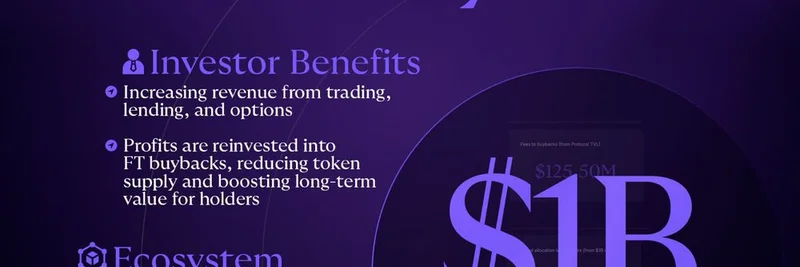If you're tuned into the crypto world, you've probably heard the buzz around Andre Cronje's latest venture. The legendary DeFi builder, famous for creating Yearn Finance (YFI), is back with something that could redefine how projects fund and sustain themselves. In a recent thread on X, user @thenameisbrill breaks it down, highlighting why Flying Tulip ($FT) is turning heads with its self-sustaining model and massive $1B fundraising goal.
What Is Flying Tulip All About?
Flying Tulip isn't just another DeFi protocol—it's aiming to be a full-stack on-chain financial hub. Imagine combining spot and perpetual trading, lending and borrowing, options trading, and structured yield products all in one seamless ecosystem. As @thenameisbrill puts it, it's like building an entire financial mall on the blockchain, where everything works together under one roof.
This integrated approach means users can trade, lend, borrow, and invest without jumping between platforms. Built by Andre Cronje, whose track record speaks for itself, Flying Tulip draws on his experience to create tools that evolve with DeFi's needs.
The Smarter Funding Model: Self-Sustainability at Its Core
What sets Flying Tulip apart is its innovative funding strategy. Instead of burning through raised capital, the project plans to park its $1B treasury in low-risk, yield-generating assets like stablecoins on platforms such as Aave and Ethena. Even at a conservative 5-10% annual yield, that's $50M to $100M in yearly income—enough to cover development, operations, and growth without dipping into the principal.
This means no constant token sales to fund the project, reducing sell pressure and creating a truly self-perpetuating system. As the thread explains, it's a rare setup in crypto where the project funds itself from interest alone, ensuring long-term viability.
Investor Benefits: Capital Protection and Buyback Rewards
One of the standout features is how Flying Tulip prioritizes investor safety. For every $1 invested, you get 10 $FT tokens plus a redemption right—allowing you to cash out your original investment at any time. This capital-protected entry minimizes downside risk, making it appealing even in volatile markets.
Once operational costs are met, excess revenue and yields go toward buying back $FT tokens from the market and burning them. This reduces supply over time, potentially boosting token value for holders. The thread estimates potential annual buybacks exceeding $22M, creating scarcity and rewarding long-term investors.
Why the Hype? Strong Backing and No Team Allocation
Flying Tulip has already raised $200M in its seed round from heavy hitters like Brevan Howard Digital, CoinFund, DWF Labs, Hypersphere, and FalconX. With Andre Cronje at the helm, it's no surprise the project is generating excitement.
Adding to the appeal, there's no team token allocation mentioned, meaning all value accrues to the ecosystem and investors. Token sales are set to begin in October, with a focus on preparing liquidity—positioning $FT as a project built for sustainability, not quick flips.
Final Thoughts on Flying Tulip
In a space full of hype-driven launches, Flying Tulip stands out with its thoughtful design: self-funding through yields, protected investments, and value-accruing buybacks. As @thenameisbrill's thread emphasizes, this isn't just another token—it's a blueprint for how DeFi projects could operate in the future. If you're a blockchain practitioner looking to stay ahead, keep an eye on @flyingtulip_ and Andre Cronje's updates. This could be one of those rare opportunities where innovation meets real-world utility.

